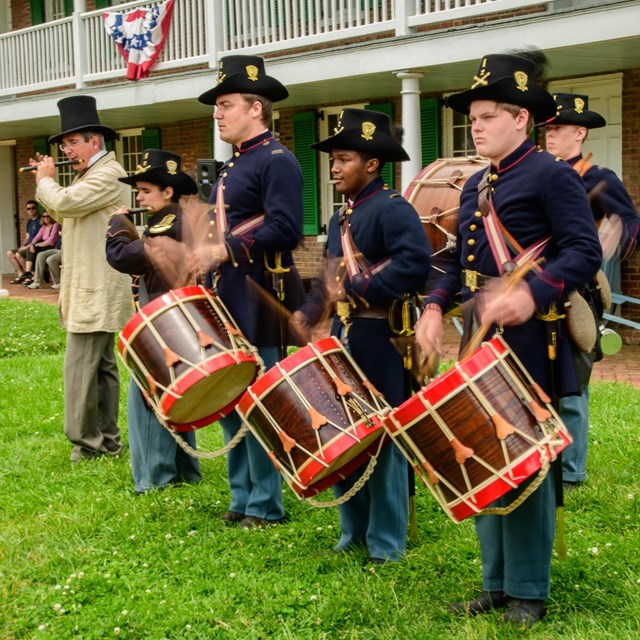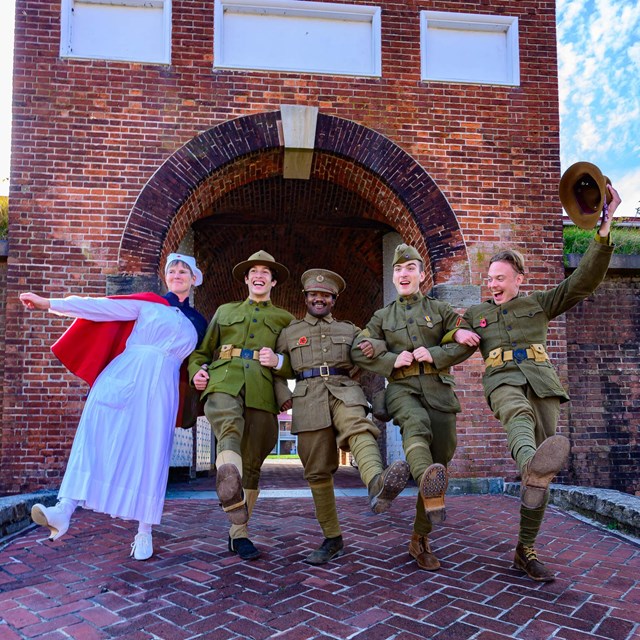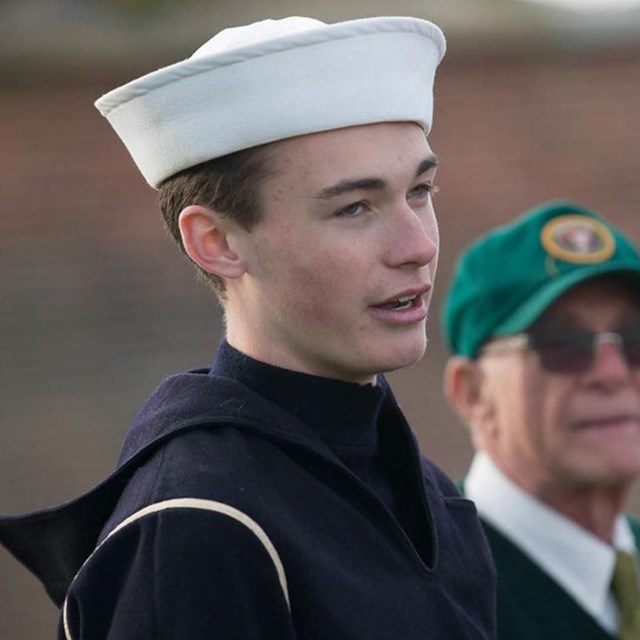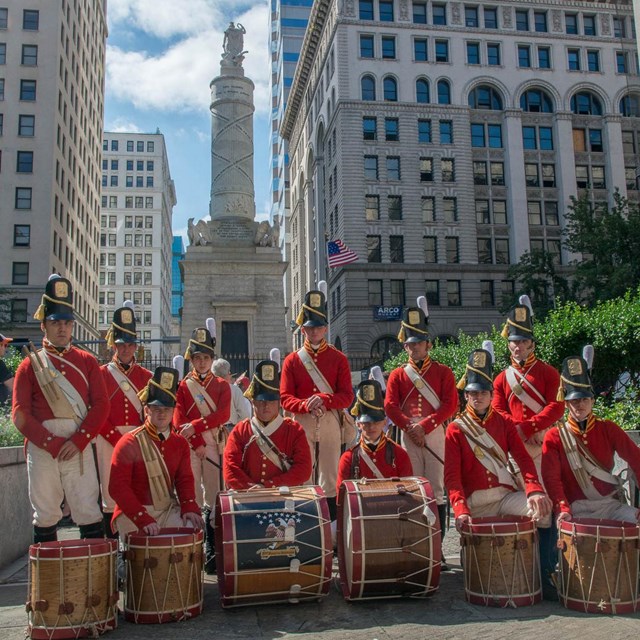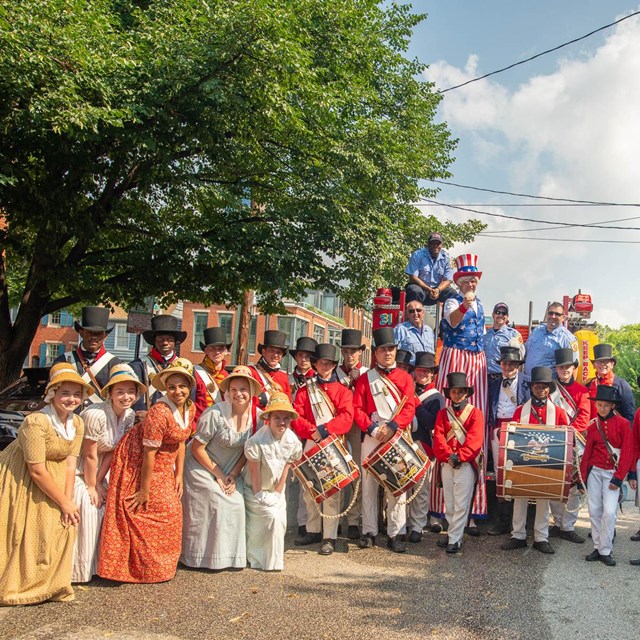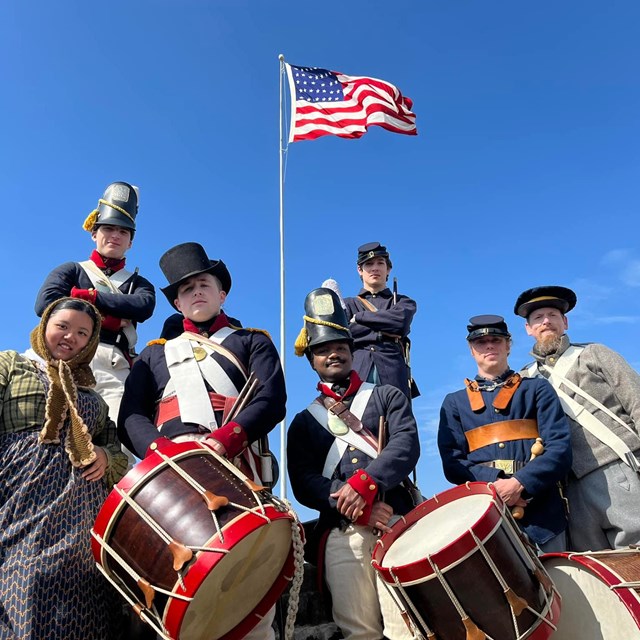
NPS/Tim Ervin Fort McHenry’s living history program is known as the Fort McHenry Guard. It is composed of specially trained park rangers and volunteers who provide visitors with a touchstone to the past. 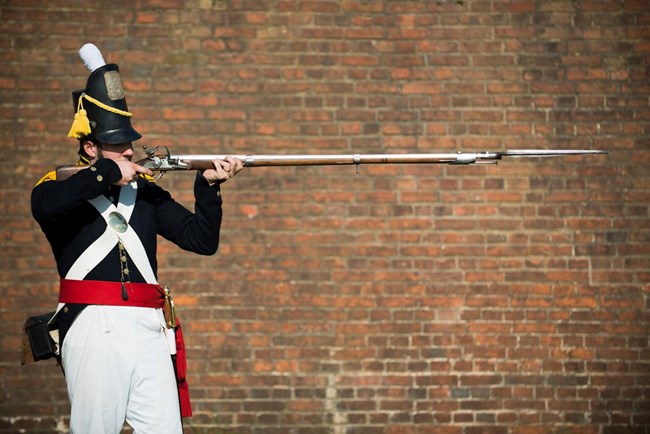
NPS/Tim Ervin United States Corps of ArtilleryThe members of the Fort McHenry Guard who take on the mantle of the professional soldier wear the uniform of the United States Corps of Artillery. This company of artillerists was the home garrison at Fort McHenry. These officers and soldiers of the regular army were under the command of Major George Armistead. The life of the ordinary soldier was a daily routine of drill, guard duty, servicing weapons, clothing and accouterments, and maintaining the barracks and grounds. In this all-volunteer army, soldiers were drawn from many civilian occupations. Some were attracted by dreams of adventure and heroism while others saw the prospect of honorable employment. Patriotism motivated many but land bounties and cash bonuses also provided incentives for recruits. 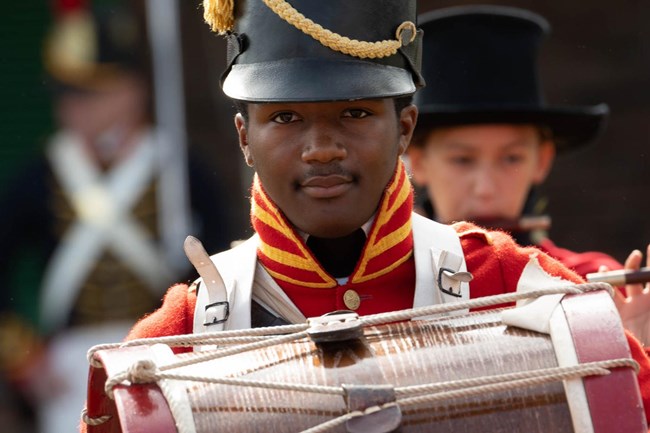
NPS/Tim Ervin Corps of Artillery Field MusicThe Fort McHenry Guard Field Musicians are an integral part of fort activity. Much of the routine of a soldier was dictated by the fife and drum. Fort drummers play on a variety of rope-tension drums with natural heads, and fifers use wooden fifes of various keys to provide the sounds appropriate to the War of 1812 era and help visitors experience what life in the garrison would have sounded like. Fort musicians are trained in a wide variety of drum calls as well as marching tunes as music was used to direct the troops. 
NPS/Tim Ervin Sailors in the War of 1812Guard members provide two living history impressions of sailors during the War of 1812—the United States Sea Fencibles and the Chesapeake Flotilla. 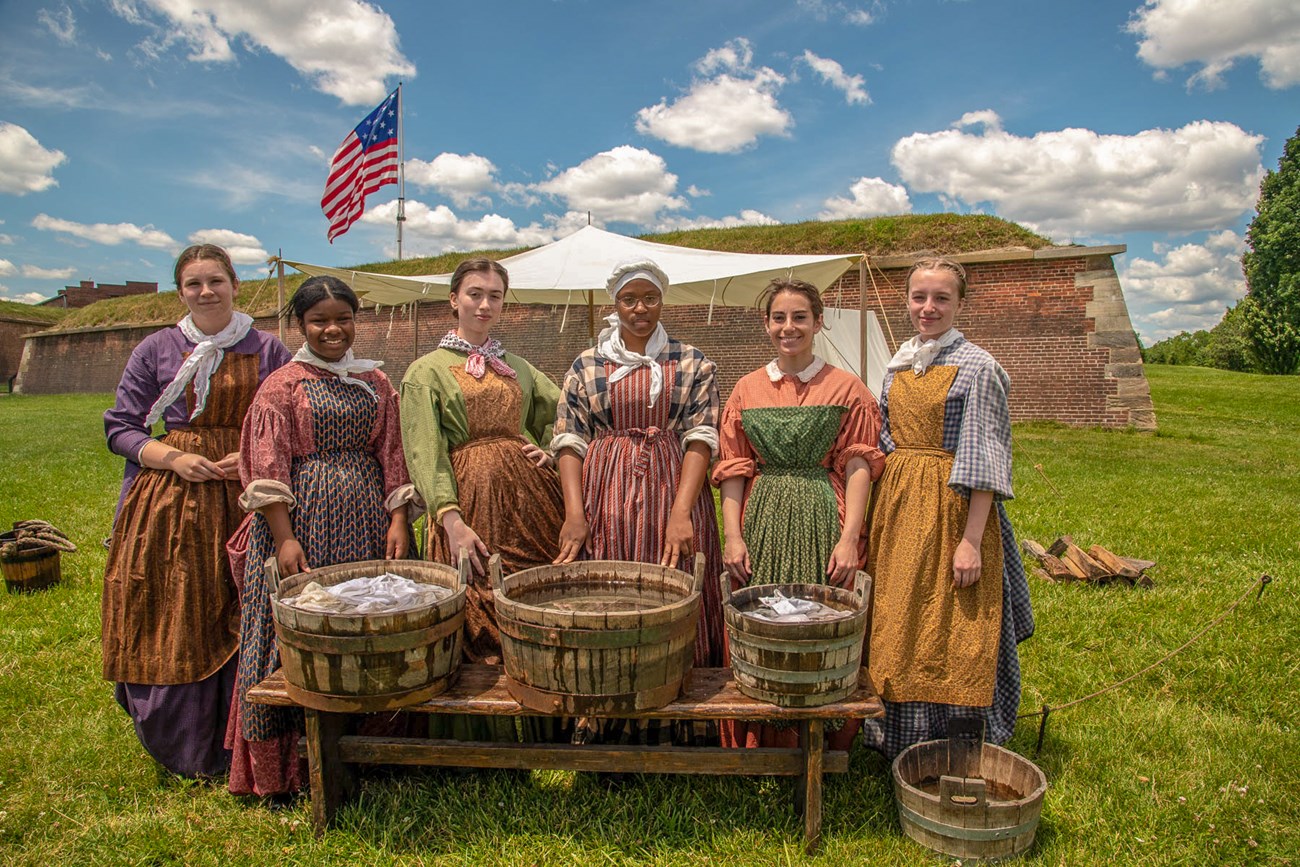
NPS/Tim Ervin Citizens of BaltimoreThe Citizens of Baltimore welcome you to discover what it was like to live and work in Baltimore and Fort McHenry during the War of 1812. The Citizens of Baltimore research and develop roles appropriate to the society and setting, such as committees formed to help in the defense of the city, the business proprietress, the merchant, the cook, the laundress and seamstress, the artisan and musician, and family members from all of the ranks and social classes of those who defended the City. We honor the memory of these early Americans and pay tribute to an unnamed citizen killed during the bombardment of Fort McHenry. 
NPS/Tim Ervin Citizen Soldiers: Militia in the War of 1812Several Militia units from Maryland and surrounding areas were called to defend the city of Baltimore as the British approached. During the late 18th and early 19th centuries, able-bodied men in the U.S. between specific ages were expected to enroll in their state militia to serve in a military capacity should their service be required. However, the expectations of militia units were not high due to a decline in formal regulation. Many militiamen received minimal training and were given little in the way of equipment. Prior to the outbreak of war, most militiamen were expected to use their own personal weapons. Despite its shortcomings, the militias offered a key military resource needed to win the war: manpower. Explore the fort's long history!
Explore history beyond the park!

NPS/Tim Ervin Living History at Hampton National Historic SiteFor special events, members of the Fort McHenry Guard also have opportunities to explore the lives and work of free, enslaved, and indentured laborers and craftsmen during the 1800s at Hampton National Historic Site. Members provide demonstrations of farm equipment, cooking, and 19th-century popular music. Guard members also provide informal interpretation of the stories of all those who lived and worked at Hampton, and the communities they built before and after Emancipation. |
Last updated: January 7, 2024

